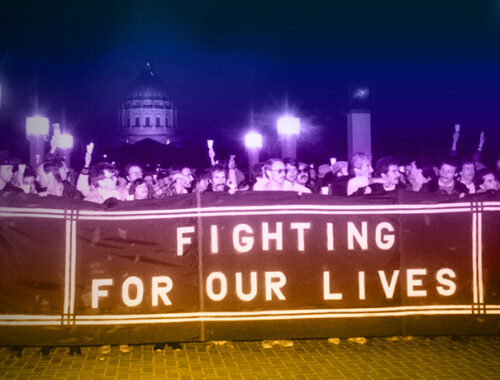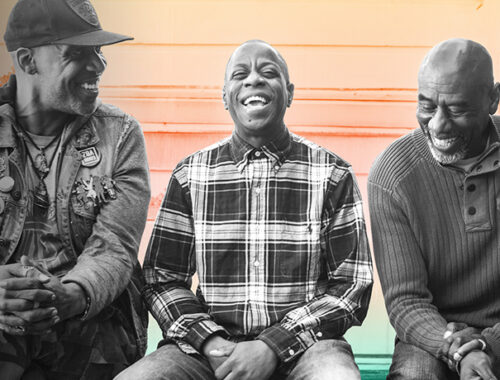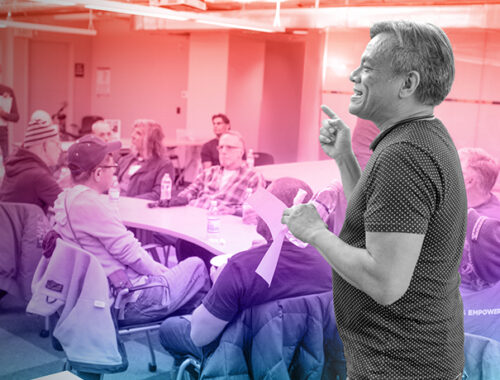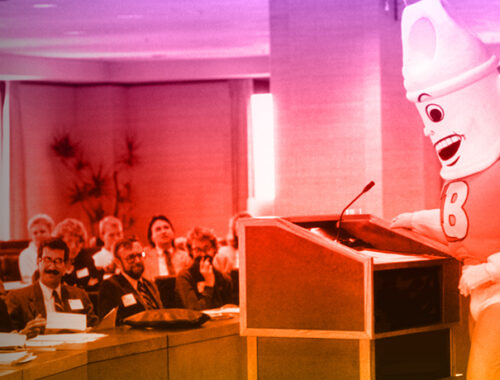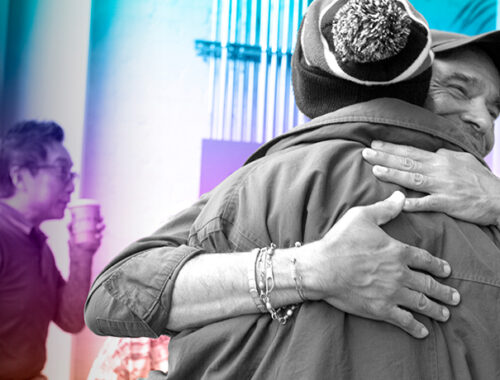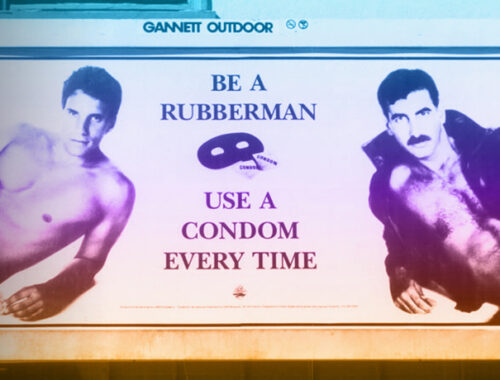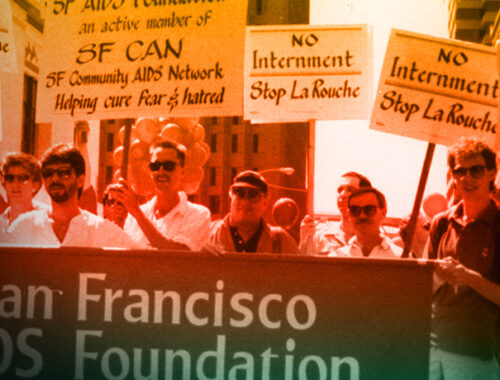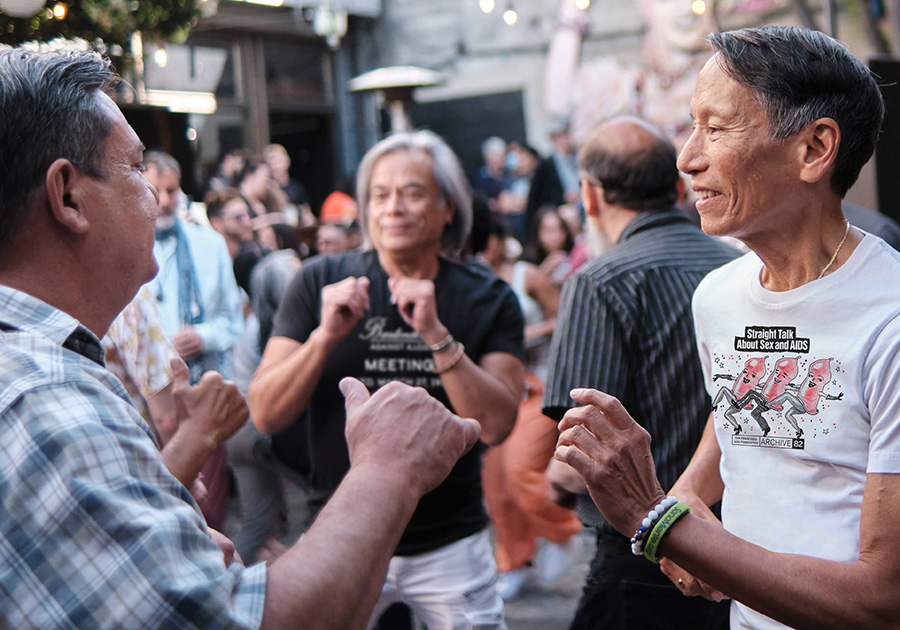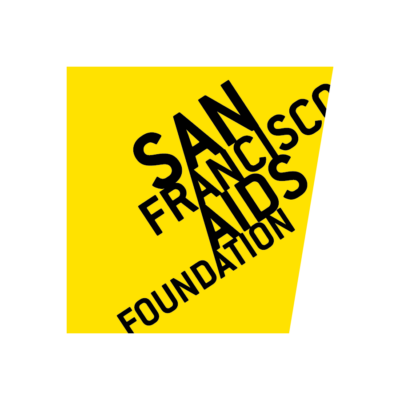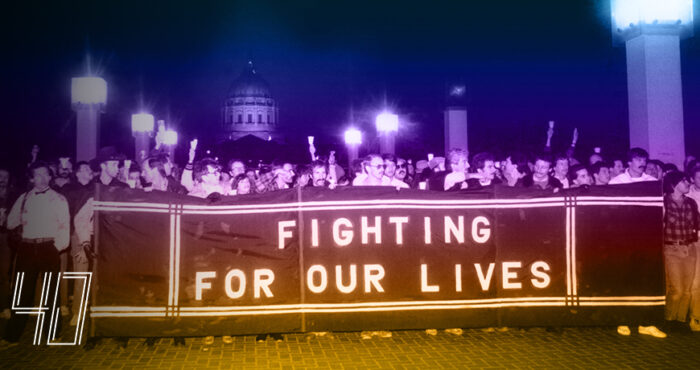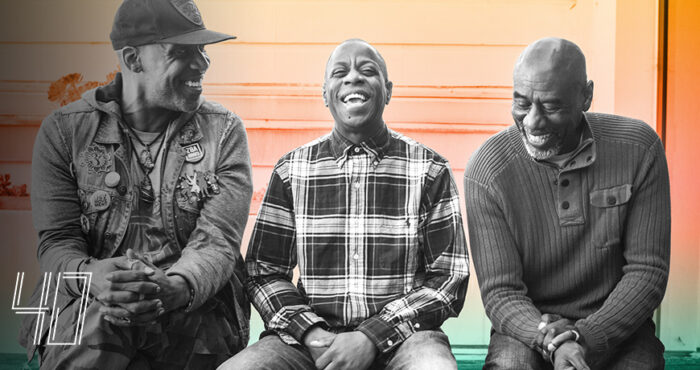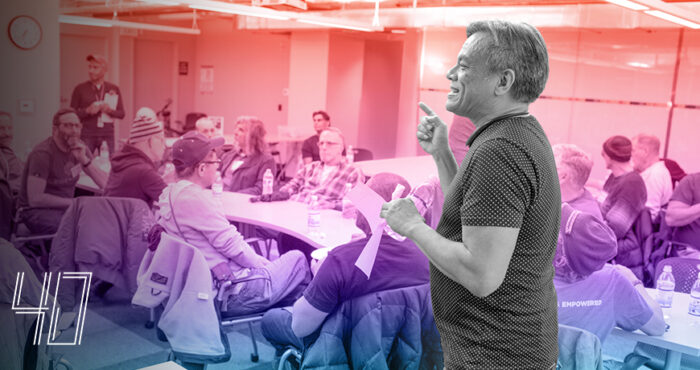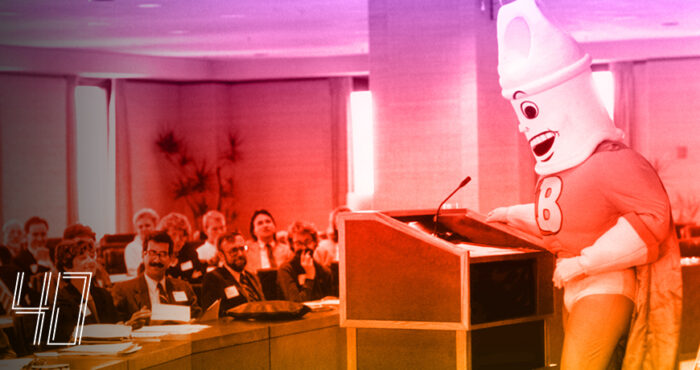From fear to facts
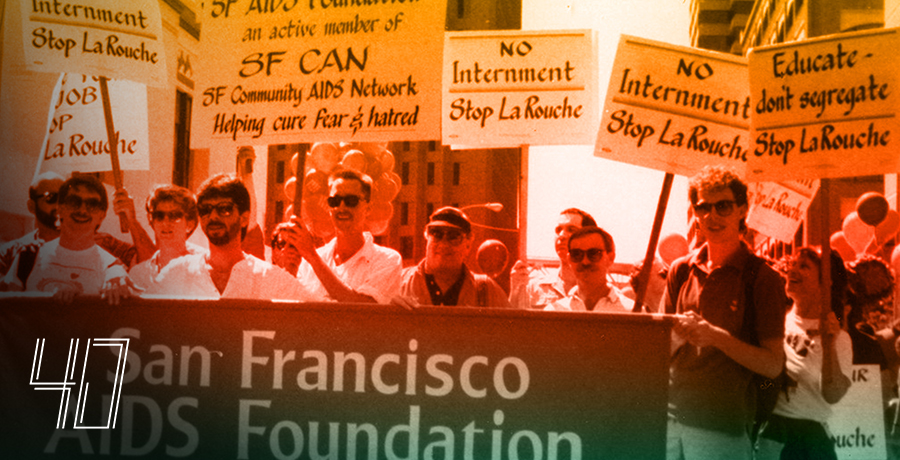
This article was produced in honor of San Francisco AIDS Foundation’s 40th anniversary, which we are commemorating in 2022.
From the early days of HIV and AIDS, stigma has complicated prevention, testing, treatment, and care. These days–when HIV is treated as a medical condition and can be managed successfully with medication–it may be difficult to believe the extent to which fear and stigma pervaded the public’s response. Throughout our 40 years, San Francisco AIDS Foundation has made combating HIV stigma a central tenet of our work–working to advance facts, not fear.
Life, Liberty, and the Pursuit of Happiness
Because of SFAF’s close ties to the LGBTQ+ community, our work has many times been the target of homophobia–sparking controversy and threatening our ability to share critical messages about HIV with our communities.
The popular “Life Liberty and the Pursuit of Happiness” campaign, produced in 1990, was no exception. Produced and advertised in collaboration with the Haight Ashbury Free Clinic, the campaign targeted young gay men in order to encourage condom use.
In the ads, two young men stand facing the camera–naked from the waist up–one holding a condom and both draped in the American flag. The text accompanying the ad, “Life Liberty and the Pursuit of Happiness,” shares a positive and affirming message meant to evoke pride and positive feelings among young gay men.
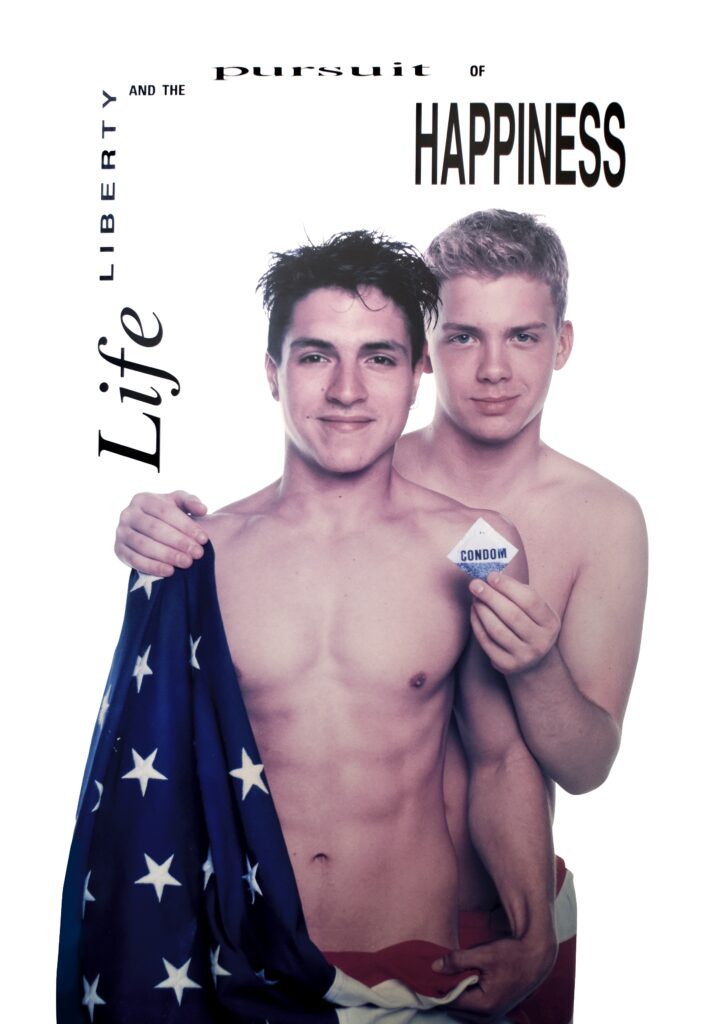
Indeed, the ads were spectacularly well-received by gay men of all ages. In an SFAF article published in 1990, a member of the community is quoted as saying, “I wish there had been something like this when I was 18 and discovering my sexuality. The flag is positive reinforcement of what I have learned in the past few years. It tells me that gay is okay, sex is okay and safe sex ensures my well-being and that of my generation. Most importantly, it tells me that I am also a valuable member of this society and that I belong.”
The campaign appeared in more than 30 bus shelters, and AIDS projects and individuals across the U.S. reached out to request copies of the poster. Although the campaign proved to be popular with its intended audience, SFAF received criticism for the campaign as soon as it was publicly released. But SFAF didn’t back down–continuing to print and share the poster as widely as possible.
“Most criticism of the ad has centered around the flag with claims of unpatriotic use and desecration,” an SFAF article from 1990 shared. Pat Christen, the executive director at the time, was quoted as saying, “Those who claim this poster is unpatriotic are using the flag to cover their homophobia. The Foundation is not afraid of controversy and we are proud to be part of this positive campaign to educate young gay men.”
In 1991, a different campaign produced controversy fueled by homophobia and AIDS stigma.
The “Sex is Good” campaign featured two bare-chested men holding each other, with one showing a clear tattoo of the U.S. Marine Corps on his arm.
In a letter to SFAF in 1992, a major in the U.S. Marine Corps wrote that our use of the emblem was “unauthorized and considered inappropriate,” and that, “the use of the emblem could create the inference that the Marine Corps is somehow partially responsible for the spread of AIDS in the San Francisco area.” The letter continued, saying that showing a man with the emblem on his arm, who is embracing another man, “could be viewed as tacit approval of homosexuality in the Marine Corps.”
“The Marines threatened to sue us,” said Christen. “They were very agitated about the campaign, and wanted us to pull the ad. Their homophobia was pronounced and so unfortunate.”
In a 1992 press release, Christen is quoted as saying, “We have no intention of complying with the Marines’ request. It is patently absurd. We are not selling perfume here. We are attempting to stem the tide of a raging epidemic by educating sexually active persons about the responsibilities that accompany sexual activity. These responsibilities include knowing one’s antibody status.”
“We didn’t back down on that campaign,” remembers Larry Zapatka, our director of budget, finance, analysis & contracts. “We got a cease and desist, but we were able to fight it. That moment stands out to me, because it showed that that foundation would stand up for what we knew to be right.”
Defeating the LaRouche Initiative
Perhaps nothing serves as a more salient reminder of the hatred directed toward people living with HIV in the early years of the epidemic than the so-called LaRouche Initiative, which ended up on the California ballot in 1986.
The measure would have required anyone living with HIV to be reported to state authorities and barred from schools or jobs in restaurants. State officials would also have been able to quarantine people with HIV.
A Washington Post article from that year describes how California’s “large homosexual community” almost unanimously opposed the Initiative. Photos from SFAF’s archive show staff from that time marching in opposition, with signs that read “No Internment” and “Stop LaRouche.”
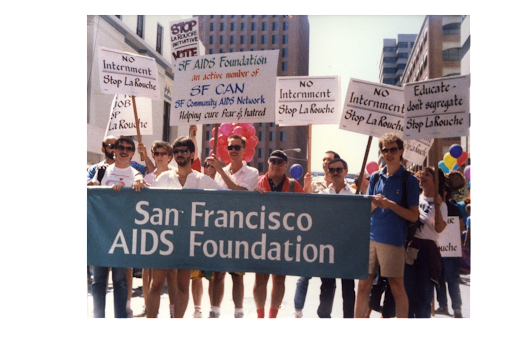
The LaRouche Initiative–Proposition 64–was overwhelmingly defeated in 1986. In 1988, it was reintroduced as Proposition 69, and again was defeated.
AIDS/LifeCycle and the California AIDS Ride
Visibility has always been an important part of ending stigma–fighting fear by humanizing HIV. AIDS/LifeCycle (and previously, the California AIDS Ride), a fundraiser for San Francisco AIDS Foundation and the HIV-related services of the Los Angeles LGBT Center has increased awareness of HIV and AIDS across California–and the nation–for 28 years.
The event, held every year in the beginning of June, now brings more than 3,000 participants (about 2,400 cyclists and 600 volunteer “roadies”) along a cycling event down the coast from San Francisco to Los Angeles. Participants of the event, which travels 545 miles in total, ride to remember people they’ve lost and to spread awareness about HIV and AIDS.
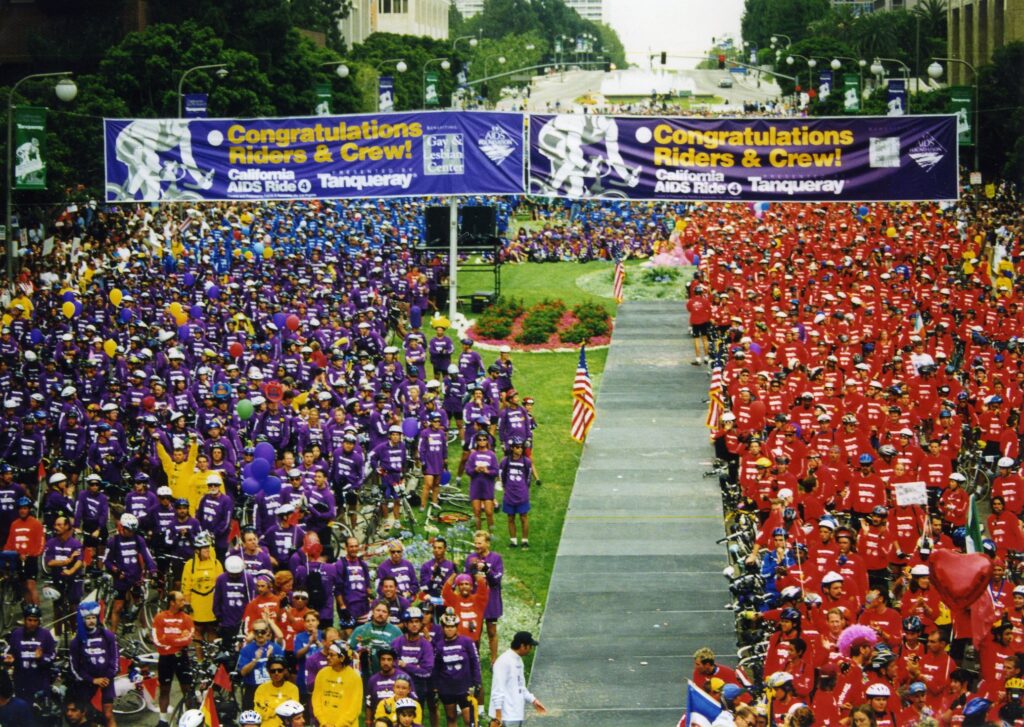
A Los Angeles Times article about the ride from 1996 shares that the event, “is about fund-raising, but also about people of differing lifestyles and sexual orientation forming a community with a common cause,” and that the first year of the event, organizers agonized over whether a corporate sponsor would agree to identify with AIDS (Tanqueray ended up signing on as an early sponsor).
“As riders roll south, they promise to be a colorful lot,” the article continues. “One year, a man rode in a tutu. Others wear T-shirts with images of loved ones who have died of AIDS complications. Some sport Barbie dolls on their helmets.” Colorful costumes and elaborate decorations at camp and at rest stops are one aspect of the ride that continues to this day. On one day of the ride, participants all dress in the color red in tribute to the AIDS ribbon.
“In my early years on the Ride, particularly on Red Dress Day, the unspoken public message of the riders sometimes struck me as defiant: “We’re queer… we’re here… get used to it.” Or, often, a jubilant “Here we are again!,” wrote Kenneth Kann, who first joined the event in 1999.
“The Ride is more than a demanding athletic event. It’s a week-long parade, a traveling public AIDS seminar, and an unapologetic public demonstration of gay presence. The Ride blasts through California communities as an outsized happening, with thousands of cyclists and volunteer supporters on the roads, dozens of trucks and cars and motorcycles, cheering onlookers, and kids high-fiving passing riders. Cyclists wear colorful costumes, decorate their bikes, and discuss the spectacle with pedestrians and local media.”
Be Here for the Cure
In 1992, an incredible partnership between SFAF and famed photographer Annie Leibovitz addressed HIV stigma head on. Leibovitz, who is famous for her portraits of celebrities, volunteered to take portraits of people living with HIV for a campaign that shared the importance of early treatment for HIV.
For the “Be Here for the Cure” campaign, Leibovitz produced a series of arresting black and white portraits, offering a compassionate look at people living with HIV. People featured in the campaign included personal messages about themselves in their own writing scrawled on top of their portrait. The photographs were displayed throughout San Francisco and in other U.S. cities including Seattle, Los Angeles, New York City, and D.C.
A 1993 LA Times article shared the perspective from a community member who visited the exhibit, who was quoted as saying the portraits “appear[ed] so ordinary’… They really just seem like people I might know.”
A young woman featured wrote, “I am more than HIV-positive. I love to paint, go disco-dancing, play pool and hang out with my friends.”
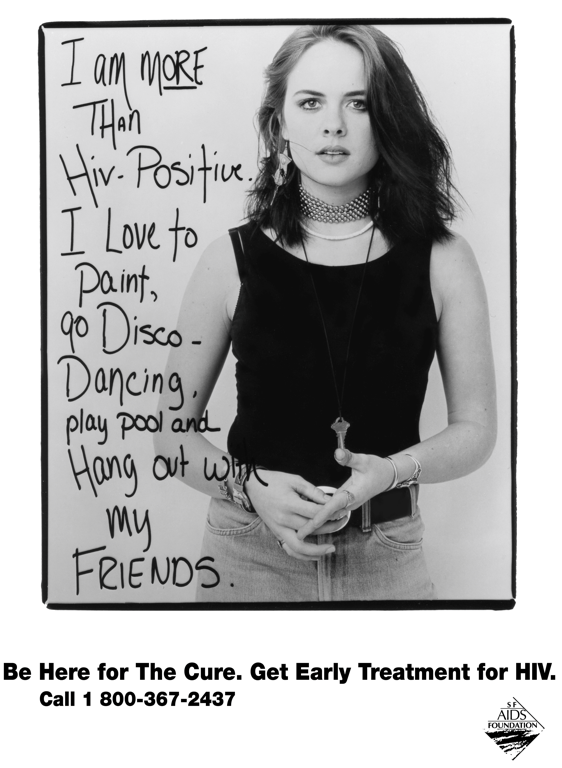
“Testing HIV-positive was a wake-up call for me,” wrote another person. “Today, I have a clearer idea of who I am and what I want from life. I think everything will be OK. I have no plans of disappearing any time soon.”
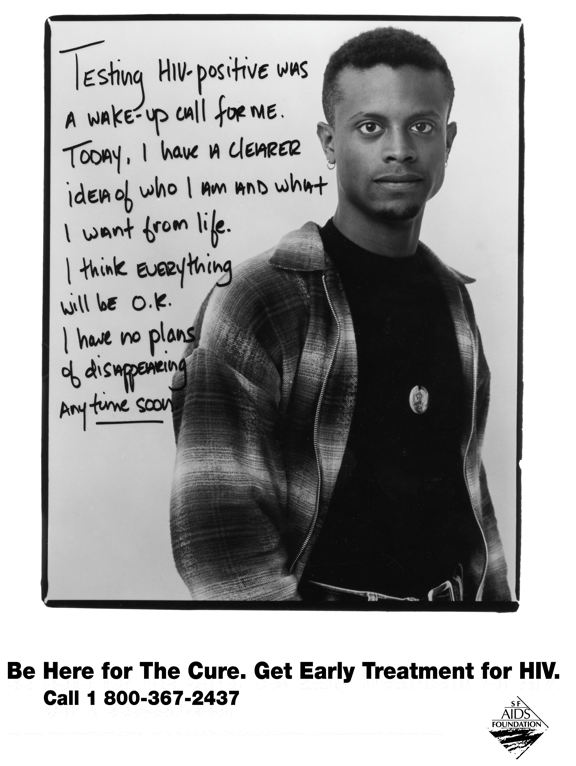
In a statement to accompany the exhibit, SFAF said that, “The images Leibovitz created are portraits of courage. They depict women, men and a child who are living with HIV on their own terms. The photos, with their personal inscriptions, bring the diverse voices of these individuals to life.”
Commemorating 40 years
Join us every month in 2022 as San Francisco AIDS Foundation marks 40 years of service to the community.
On this occasion, we take a look back and share our storied history of leadership in HIV prevention, education, advocacy, and care, and HIV history in San Francisco and the Bay Area since the beginning of the epidemic.
As we look back on our history, we approach the future with hope, and with a renewed sense of all that our passion and ingenuity can bring to enact positive change in our community. We will act in bold and brave ways to reach an end to the AIDS epidemic, and ensure that health justice is achieved for all of us living with or at risk for HIV.
After 40 years, we will not lose sight of our commitment to our community, and our vision for a brighter future.






